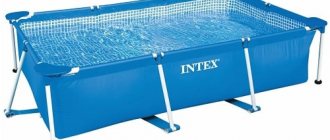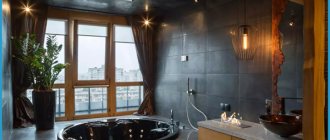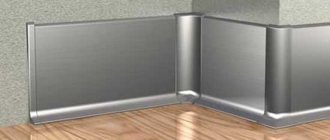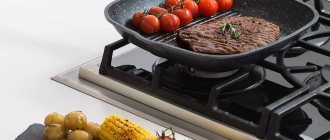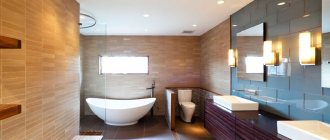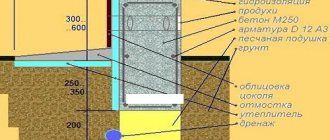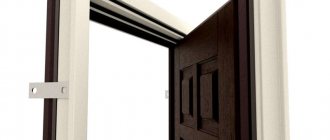The option of purchasing a solid fuel boiler for autonomous heating of premises often becomes one of the best options due to its simplicity and reliability.
However, choosing a unit is a non-trivial process. To make your task easier, we have compiled a rating of the best solid fuel boilers with a water circuit.
When selecting models, we took into account the opinions of experts and installation specialists, user reviews and technical characteristics of the devices.
Here you will find only the best models in terms of price/quality ratio.
Rating of the TOP 15 best solid fuel boilers with a water circuit in 2021
| Place | Name | Price |
| TOP 4 best solid fuel boilers with a water circuit in price/quality ratio for 2021 | ||
| 1 | Teplodar Cooper Praktik 8 single-circuit | Find out the price |
| 2 | ZOTA Yenisei 14 14 kW single-circuit | Find out the price |
| 3 | Lemax Forward-16 17 kW single-circuit | Find out the price |
| 4 | Teplodar Uyut-10 10 kW single-circuit | Find out the price |
| TOP 4 best solid fuel boilers with a water circuit and electric heating element | ||
| 1 | Teplodar Kupper Praktik 14 14 kW single-circuit | Find out the price |
| 2 | Teplodar Kupper OK 15 15 kW single-circuit | Find out the price |
| 3 | Teplodar Kupper Expert-15 single-circuit | Find out the price |
| 4 | Teplodar Kupper OVK 18 18 kW single-circuit | Find out the price |
| TOP 4 best cast iron solid fuel boilers with a water circuit | ||
| 1 | Krontif Siberia 60 single-circuit | Find out the price |
| 2 | Kentatsu MAX-04 38 kW single-circuit | Find out the price |
| 3 | Sime SOLIDA EV 6 56 kW single-circuit | Find out the price |
| 4 | Krontif Siberia 30 single-circuit | Find out the price |
| TOP 3 best solid fuel boilers with a water circuit using wood | ||
| 1 | ZOTA Box 8 8 kW single circuit | Find out the price |
| 2 | Teplodar Kupper OK 9 9 kW single-circuit | Find out the price |
| 3 | Lemax Forward-12.5 13 kW single-circuit | Find out the price |
Gas boilers
So, let's start with gas boilers. Gas boilers can be divided into the following subgroups:
- factory or homemade
- floor or wall
- steel or cast iron
- with an open combustion chamber or with a closed one
Wall-mounted gas boilers
Let's analyze factory wall-mounted boilers. Wall-mounted boilers for heating a private home are the most popular, most convenient, most compact and practically the safest type of gas boilers. They come with both open and closed combustion chambers.
Ideal for use with a closed combustion chamber, because the required chimney length is only 1 m. Thanks to this, the boiler can be installed anywhere. Even in the bedroom, since such a boiler operates quietly and there is no need for a boiler room. Combustion air is taken from the chimney and combustion products are thrown out there. Has good efficiency.
They are divided into 2 main types:
- with hot water preparation
- without hot water preparation
Types of heat exchangers
And also according to the principle of preparing hot water supply they distinguish:
- with biteric heat exchanger
- with plate heat exchanger
A bithermic heat exchanger is a heat exchanger in which a heat exchanger for heating and a heat exchanger for water supply (water heating) are concentrated in the housing.
To heat water in this way, it must be prepared. Since the water is mostly hard, the heat exchanger becomes clogged and this causes overheating for heating. Sensors begin to give commands about overheating. The heating boiler of a private house turns off because of this. If overheating occurs frequently, the boiler turns off just as often. In this case, it is necessary to replace the bithermal heat exchanger. And it's not cheap.
There are copper heat exchangers and stainless steel. Stainless steel lasts a little longer, but still clogs.
It is much more profitable to purchase a regular boiler without heating water and connect an indirect heating boiler using a coplanar distribution manifold. Then everything will work well and nothing will get clogged. And the boiler will last much longer.
The plate heat exchanger is located in a separate housing. Water is heated by redirecting the coolant using a three-way valve: there is a valve that is controlled automatically. If the consumption of hot water begins, the boiler itself switches to the plate heat exchanger and the water is heated. After turning off the water, it switches to the mono-exchanger and heats up the heating. Such boilers are more reliable. Due to the absence of high temperature from the flame, they do not clog. The weak point is the three-way valve. Breaks down when switched frequently. And it turns out a little water - 14 l/min. This is only enough to use one water source.
Therefore, it is not advisable to use such heating boilers for private houses for direct heating of water. It is necessary to install an indirect heating boiler. And the presence of constant power supply. If there are many sources of consumption (indirect heating boiler, heated floors, heating), it is necessary to install a hydraulic arrow and a distribution manifold.
More details about the hydraulic arrow:
The boiler has a low power of 24, 28, 35 kW and is suitable for houses of 50-150 m2.
You can install several heating boilers in a cascade for a private home and more. Applicable in cases where breakdown is unacceptable, for example, in a kindergarten. Or, during the warm season, use one boiler, and, if necessary, connect a second one.
There are condenser boilers, they have a power of up to 100 kW.
Floor standing gas boilers
Floor-standing boilers are divided into:
- steel
- cast iron
- with natural draft
- with blower burner
Natural draft boilers are gravity-flow boilers that do not require electricity.
The burner runs on electricity, which increases power. Cast iron boilers for heating a private home can work with various burners: diesel, gas, fuel oil, etc., combined. The burner has a large power control range from 16 to 60 kW.
Of course, cast iron boilers are better. They have good pressure, a long service life and an efficiency of up to 90% - therefore they are more economical.
Steel boilers are cheaper, but they have less efficiency. Therefore, there will be large energy losses. They also have a shorter service life and lower pressure.
How to choose a solid fuel boiler?
The choice of a solid fuel boiler should be accompanied by taking into account the following points:
:
- The heating area is the main characteristic when choosing a boiler unit, usually at the rate of 1 kW per 1 sq.m., however, it is better to take into account not the area, but the volume of the room.
- Types of fuel - not all modern models, like the good old stoves, are omnivorous in terms of fuel. Some options are also very sensitive to it and will not only not provide the specified characteristics, but will also create problems in operation, or even fail altogether.
- Energy independence - of course, most solid fuel boilers are independent of electricity, but pellet options are equipped with electronics that require uninterrupted power.
Combined gas boilers
The only combined type of boiler that can be recommended for installation is double-circuit gas boilers, which allow the boiler to be used for both heating and hot water supply.
Every homeowner who decides to buy a double-circuit gas boiler and equip their home with it will be able to save due to:
- no need to purchase an additional boiler. Each of the models on the market is capable of simultaneously heating not only the coolant in an autonomous room heating system, but also the water entering the water supply;
- gradual heating of water and the absence of a hot water tank, which is in any boiler, allows you to consume exactly as much hot water as you need. Due to this, you save yourself from heat loss, which is inevitable, since over time, the accumulated hot water cools down, which causes its additional heating to turn on;
- Small size saves the space required to equip the combustion chamber. The wall-mounted design of a double-circuit gas heating installation will allow you to do without purchasing additional equipment, for example, a centrifugal pump, since it is already included in the design of the unit. This will also save useful space and reduce the load on the electrical network;
- no need to install a special chimney. Turbocharged double-circuit gas boilers do not require a complex chimney, a brick or concrete base, or a pierced roof to supply air and remove combustion products;
- more precise regulation by automatic control systems of operating parameters. Depending on the climatic conditions and the degree of thermal insulation of your home, such a system will automatically reduce or increase the degree of heating, which will make it possible to both save money on “warm” winter days and set air temperature parameters depending on the presence of your family members in the house.
In addition to the above-mentioned advantages of such heating systems, modern models are able to operate at almost any gas pressure in the pipeline, which increases their performance characteristics.
As for the cost of double-circuit gas boilers, if there is one, it is not much higher than that of other heating units
If we take into account the significant service life and the above advantages of the heating installation, we can conclude that purchasing and installing a double-circuit heating unit is the most optimal way to provide yourself and your family with hot water and maintain a comfortable temperature in a private home during the winter months
Which company should you choose?
Solid fuel boilers equipped with a water circuit are produced by various manufacturers, among which stand out:
- Teplodar is a Russian company with patented technologies that supplies high-quality heating equipment throughout the world.
- Zota is a Krasnoyarsk brand that supplies inexpensive components and boilers of low cost and high build quality.
- Stropuva is a young Lithuanian company that has patented a candle-type long-term combustion technology. It produces models taking into account the climatic characteristics of countries and regions.
Automation
- compliance with the temperature regime in the system;
- control of pumps in the main and auxiliary (admixture circuit) circuits;
- maintaining the set temperature of hot water supply;
- control of coolant flows using a three-way valve.
If there is an automation unit, a person only needs to set the required temperature and load fuel, then the combustion process is controlled automatically according to the specified settings by controlling the supply of oxygen to the firebox. If heating is carried out using a pellet unit, then the fuel is loaded automatically.
Operating principle of three-way valve
If there is a three-way valve, the system works on the principle of mixing hot water from the boiler into the main flow when the temperature drops below the set one. This principle allows you to heat only the required amount of water. It can be supplied either directly from the boiler or from a buffer tank. At the same time, it can be heated by alternative sources, for example, a solar collector.
Principle of operation
Boiler units are quite simple in their operating principle, based on the basic laws of physics.
The principle itself includes successive points:
- Loading a suitable type of fuel;
- Ignition of fuel using a burner or other fire source;
- Combustion of fuel, during which heat is released and thermal energy is transferred to the coolant for the heating circuit or hot water supply;
- Exhaust of flue gases into the atmosphere through a chimney by natural or forced circulation;
- Natural or forced circulation of heated coolant through the heating system.
Finnish combined heating boilers
Finnish boilers occupy a fairly large market share. This is due to several reasons. Firstly, their climate is close to ours, so we can expect that their power will be sufficient in our conditions. Secondly, most campaigns have been working for a long time, and, therefore, have gained experience and have a certain potential. Well, and thirdly, their quality is up to par.
Jäspi Group is one of the Finnish companies operating in this heating equipment sector. Their boilers have a good reputation and are all equipped with heating elements. The basic configuration of the boilers includes one heating element for 6 kW. You can order 2 or 3 pieces.
Finnish combined heating boilers Jäspi
In the Jäspi VPK line you can use wood, pellets, diesel fuel, and gas. Jäspi Tupla has a high efficiency, copper coil, runs on diesel/gas and solid fuel. In this line, the fireboxes are autonomous, only combustion products exit into one pipe, therefore the smoke channels are combined in front of the chimney fitting. Operation on gas or diesel fuel is characterized by high efficiency. When the burner is set correctly, the fuel is burned almost completely, so cleaning this combustion chamber is only required once a year. When using firewood, their size depends on the modification: in Tupla 1 S – 35cm, in Tupla 2 S – 50cm.
Some technical characteristics of Jäspi Tupla and Triplex
Jäspi Triplex boilers are a model with reduced emissions of harmful substances into the atmosphere, equipped with new ceramic grates. It is also possible to use 35 and 50 cm firewood. For modifications with a firewood length of 50cm, top combustion can be implemented.
The Jäspi Biotriplex line uses the latest developments: switching from pellets to firewood and back does not require changing equipment. The two fireboxes are independent of each other.
Types of devices
Solid fuel boilers are classified according to fuel combustion processes:
- Traditional boilers with water circuit. This is a non-volatile class of equipment. In them, the combustion process proceeds from the bottom up, the fuel is loaded manually. It burns in a fixed layer on a grate, air enters the firebox naturally through the holes, and the burned gases are released into the atmosphere due to the vacuum created by the height of the chimney. Combustion at one fuel filling lasts from 2 to 6 hours, depending on the combustion volume, type of fuel and its calorie content.
- Long burning. A distinctive feature of such units is the top loading of fuel. Combustion occurs at the bottom of the fuel on the grate; as it burns out, the fuel is released, which ensures a continuous combustion process on one tab during the day.
- Pyrolysis water boilers. The most promising and expensive boilers are equipped with two combustion chambers. In the first, fuel smoldering and the formation of pyrolysis gas occurs, and in the second, the afterburning principle is implemented, where highly efficient pyrolysis gas burns, releasing a significant amount of thermal energy. These boilers have the highest efficiency and cost. They also require storage facilities for storing fuel, which must be taken into account before connecting the boiler.
- A universal water heating boiler - capable of operating on different types of fuel from electric to gas, after appropriate replacement of the burner device. However, they achieve the calculated efficiency only when using the main type of fuel. On other types it will be significantly lower with a drop of up to 10%. This is due to the fact that the smoke ventilation system is designed for solid fuel and the corresponding speed of movement of flue gases, as well as the possibility of heat removal from the “water jacket” of the boiler.
Sales of hot water supply
When planning to install a wood-burning boiler with a water circuit, you should think about the problem of hot water supply - in the 21st century, heating water in pots and buckets is still not very reasonable. Therefore, the problem requires a solution. Wood-burning water boilers with two circuits are rare and very expensive. It is much cheaper to implement a hot water supply circuit in other ways:
The use of low quality solid fuel not only leads to increased fuel consumption, but can also cause damage to your boiler. So it’s better not to save on this.
- Using electric boilers;
- Using instantaneous water heaters;
- Using indirect heating boilers.
Traditional electric boilers can provide hot water at any time of the year, regardless of a long-burning solid fuel boiler. They consume only electricity, spending it extremely carefully - they have thermostats.
Instantaneous water heaters with decent performance are relatively cheap and do not take up much room space. But they require powerful electrical wiring, which some older houses lack. Devices with a power of over 3 kW must be powered from a separate entire line with an RCD. Therefore, their use is not always justified. But they are more economical compared to boilers - if water is needed literally several times a day.
Indirect heating boilers will be an excellent addition to long-burning solid fuel boilers. They connect to water circuits and take energy from them. Maintaining the set temperature is ensured by circulation pumps and special shut-off valves (there are a lot of implementation schemes). Advantages of the scheme:
- High level of reliability (experts recommend);
- Low electricity consumption in winter;
- Possibility of supplying hot water to several water points at once.
In the summer, when solid fuel boilers are turned off, heating is carried out using electricity - using built-in or connected heating elements.
You can also prepare hot water using an instantaneous or storage gas water heater by connecting a gas cylinder to it. This scheme is economical and versatile - as soon as gas appears in a populated area, the equipment can be easily connected to the main line.
Popular models
If you are planning to purchase a wood-burning water boiler for heating a private home, you will need information about the most popular models. We will look at three popular long-burning solid fuel boilers and study their technical characteristics.
Stropuva Mini S8
The presented model is extremely simple.
Its long-lasting combustion is ensured by a large combustion chamber, which is built according to an open design. The efficiency of the unit is 85% - a solid indicator for such a simple solid fuel boiler. Thermal power is 8 kW, which is enough to heat households up to 80 square meters. m are small country houses and country houses. The operating pressure in the water circuit must not exceed 1.5 bar. Long-burning solid fuel boilers Stropuva Mini S8 are distinguished by their compactness - their bodies are elongated in height. Therefore, they are easily placed in small spaces. Firewood or briquettes are used as fuel. The temperature of the coolant in the water circuit varies from +60 to +95 degrees; a thermometer is provided on board for monitoring. There is also a safety valve here.
Burzhuy-K Modern-12
Here we have a typical long-burning solid fuel boiler that runs on any type of fuel - from traditional wood to coal.
The device is built according to a pyrolysis scheme; the operating time from one fill of fuel is up to 12 hours. Thermal power is 12 kW, heated area is up to 120 sq. m. Despite the external simplicity and unpretentiousness, the efficiency indicator is up to 92% - the equipment can compete even with gas boilers. Solid fuel boilers Burzhuy-K Modern-12 are manufactured in Russia, their price varies between 56-63 thousand rubles. Manual traction control is provided here, but nothing prevents you from adapting an additional electric traction regulator for this - it is purchased separately. It is also possible to supplement the equipment with a second circuit - in winter you will be provided with hot water.
In terms of its cost, characteristics and capabilities, this is one of the most balanced domestic long-burning solid fuel boilers.
Buderus Logano S121-2-26
Powerful long-burning pyrolysis solid fuel heating boiler from a well-known foreign brand.
Its thermal power is 26 kW, but the efficiency indicator is a little “lame” - only 78%. In one hour of operation, the device consumes 8 kg of firewood. The coolant temperature varies between +70-90 degrees at a pressure of up to 3 bar - it is possible to heat large households, including those up to 2-3 floors high. An electronic control system is already provided on board the solid fuel boiler - it comes standard. It allows you to regulate the intensity of fuel combustion using an exhaust fan. Long combustion is ensured by a large combustion chamber and an adjustment system. A display is provided on board to monitor operating parameters.
The disadvantage of the presented boiler is its heat exchanger - it is made of simple steel, not cast iron.

